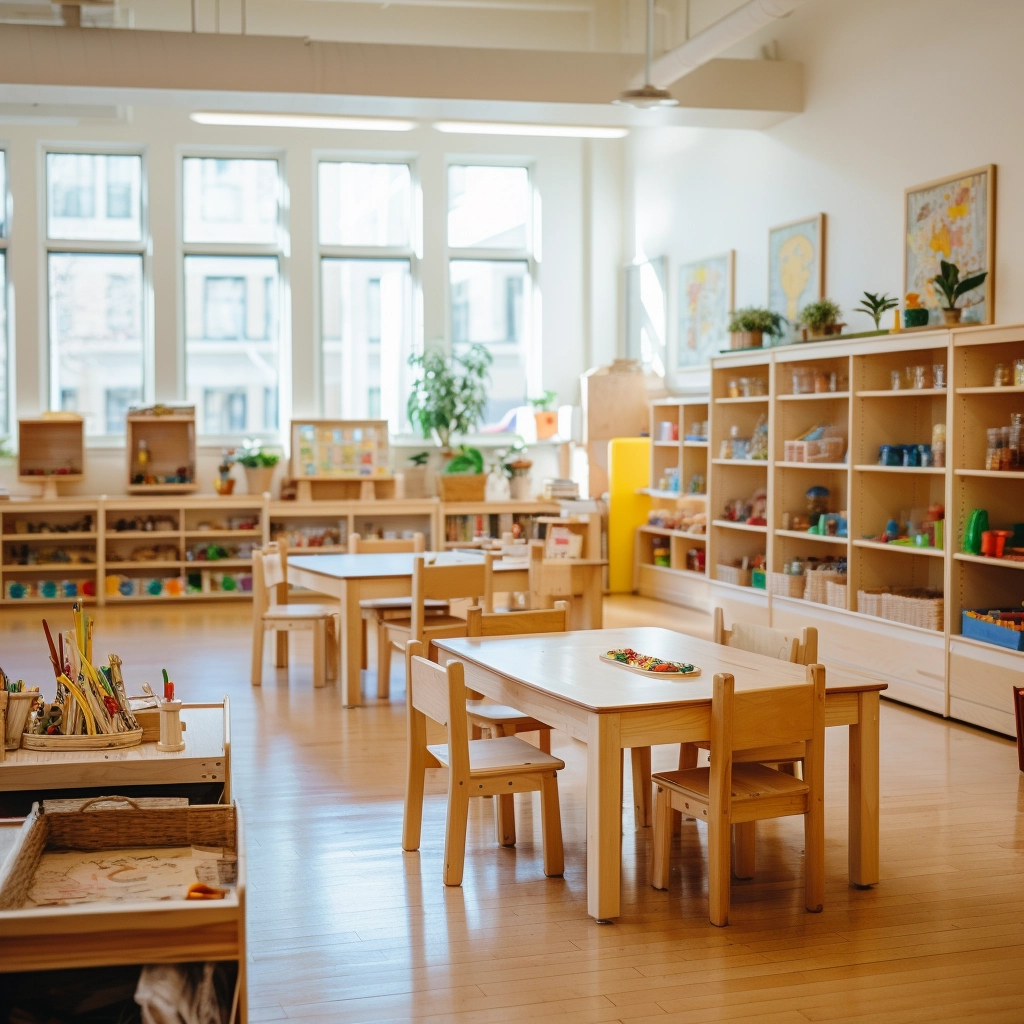Is your classroom filled with wiggling bodies that can’t sit still? Are traditional chairs failing to support your students’ focus, comfort, and creativity? Are you tired of rigid desk setups that limit movement and make your room feel more like an office than a place for kids, when what you need are flexible seating options designed for young learners?
Flexible seating options are changing the game in early childhood education. Instead of sticking every child in a hard chair, you can offer fun, adaptive, and comfortable choices, like wobble stools, floor cushions, bean bags, and scoop rockers. These options help children move, collaborate, and feel more in control of their space, boosting engagement, focus, and joy in the classroom.
Let’s rethink the classroom together. In this article, I’ll show you 50 innovative flexible seating options that are perfect for preschool and early learning centers. Whether you’re starting small or doing a full classroom makeover, you’ll find practical and inspiring ideas that work.
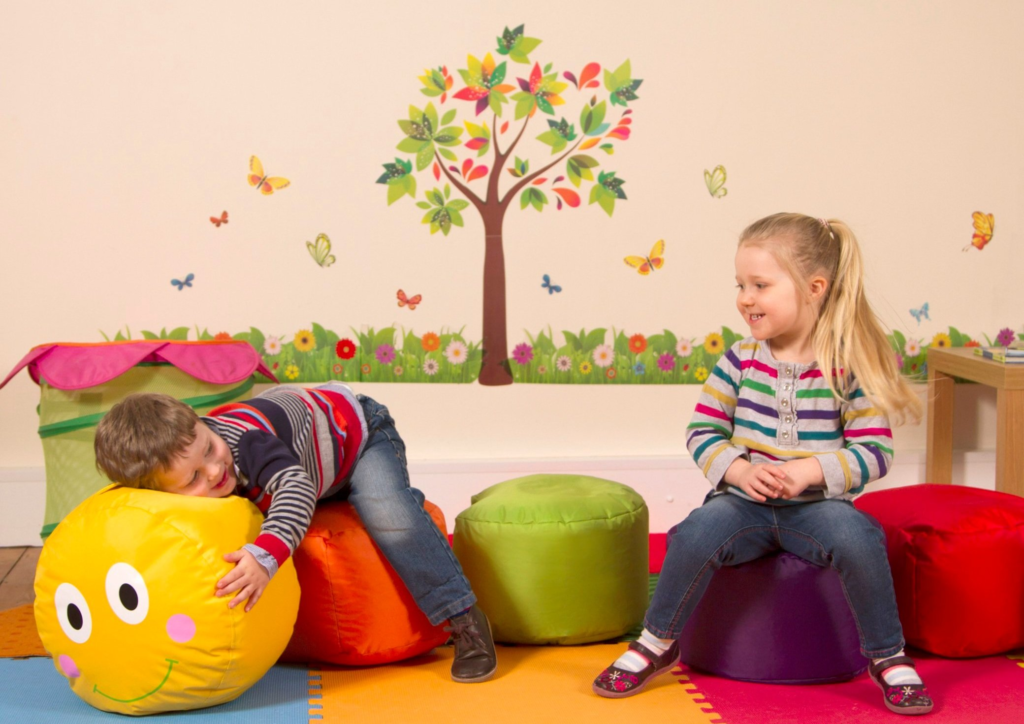
What is Flexible Seating in a Classroom?
Flexible seating is a classroom approach that gives students the freedom to choose how and where they sit, whether it is on a wobble stool, floor cushion, bean bag, or traditional chair. It’s not about removing structure or letting kids roam; it’s about offering purposeful options that support focus, comfort, and individual learning styles. The goal is simple: students learn best when they’re comfortable, and they often know what works best for them.
In a classroom utilizing these ideas, teachers guide students to make responsible seating choices based on the task at hand. This approach builds independence, encourages movement, and creates a more student-centered learning environment. Instead of forcing all students into the same seat, implementing a variety of classroom flexible seating ideas provides choice and gives every child the chance to feel more engaged and in control of their space.
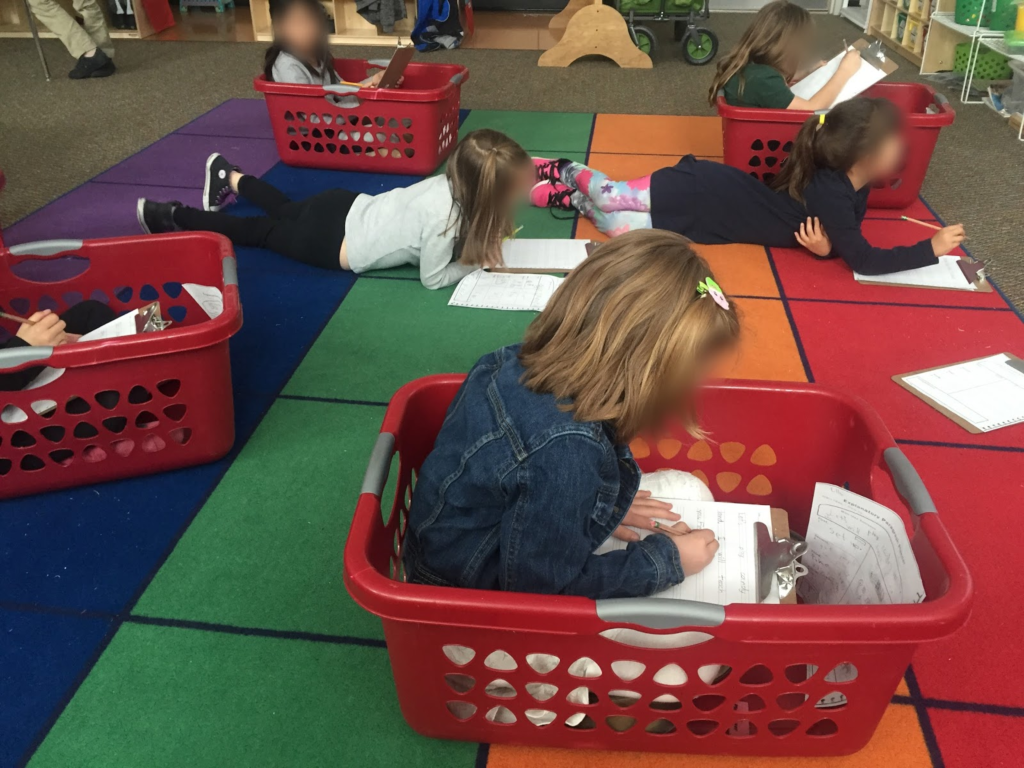
Why Flexible Seating Options Matter in Early Childhood Education?
Integrating flexible seating options into early childhood classrooms does more than just change the furniture; it transforms how children learn, move, and interact. At this age, students need learning spaces that are as dynamic as they are. Here’s why flexible seating in the classroom matters:
Improves Focus and Attention
Children are naturally active, and sitting in one spot for long periods isn’t realistic. Flexible seating options like wobble stools for classrooms, wiggle chairs, and other movement-based student seating help learners stay alert by allowing subtle motion while seated. These tools support focus and attention without being disruptive.
Encourages Independence and Decision-Making
Implementing flexible seating classroom ideas gives students the freedom to choose how and where they learn best, be it a comfy floor seat, a school stool, or a bean bag chair. These flexible seating options encourage daily decision-making, build self-awareness, and foster a sense of responsibility even in young learners.
Supports Different Learning Styles
Some children work best while sitting upright in classroom chairs with desks, while others prefer spreading out on the classroom floor. Offering alternative seating options, from cushions to scoop chairs, ensures that visual, kinesthetic, and tactile learners all feel supported by a variety of flexible seating options tailored to their needs.
Enhances Classroom Engagement
Colorful and comfortable flexible classroom seating makes the learning space more welcoming. When children feel at ease, using scoop chairs, floor cushions, or even rolling chairs for classroom use, they are more likely to participate, explore, and stay engaged. Flexible seating options turn passive classrooms into active learning zones.
Aids Sensory and Behavioral Needs
Many teachers report that flexible seating options with adaptive features help reduce outbursts and fidgeting. Items like fidget seats, sensory stools, or wiggle stools for classroom settings provide calming input for children who need movement or tactile stimulation, making the space more inclusive and supportive.
¿Listo para diseñar un espacio que inspire el aprendizaje? Contáctanos para crear soluciones de mobiliario personalizadas y adaptadas a las necesidades de tu aula.
Top 50 Flexible Seating Options for Classrooms
1. Bean Bag Chairs
Sillones tipo puf are a classic go-to for alternative classroom seating. They’re soft, fun, and perfect for reading corners or calm-down spaces. The squishy shape conforms to each child’s body, offering support and comfort during quiet time. Look for ones with washable covers and sturdy stitching. These are one of the easiest flexible seating options to add on a budget, especially in younger grades.
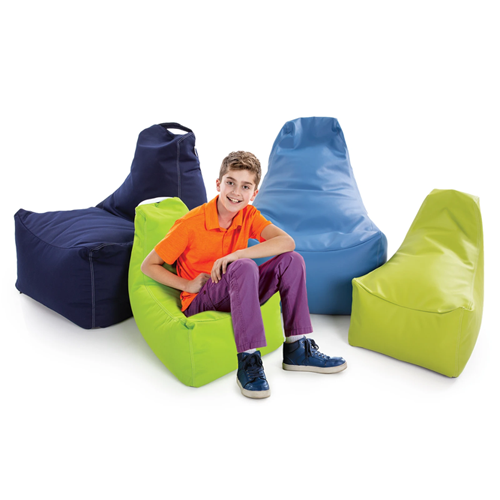
2. Floor Pillows and Cushions
Soft, stackable, and space-saving, floor pillows are an excellent choice for kindergarten flexible seating. They encourage movement and freedom during circle time, reading, or independent play. Plus, kids love having their “own” color or shape. Providing floor mats in a variety of creative shapes, such as round and square, not only enriches the visual environment of the classroom, but also makes it more fun for children to choose their seats.
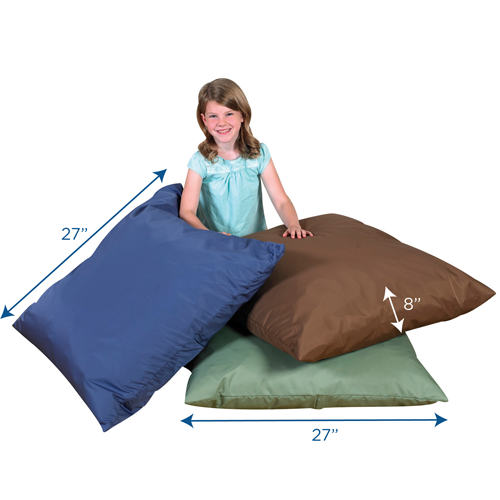
3. Balance Ball Chairs
Also known as yoga balls, these seats promote active classroom seating by engaging a child’s core muscles. They help students stay alert while reducing slouching. Many models now include a base to prevent rolling. Ideal for kids who need subtle movement to stay focused. A great pick for flexible seating in classrooms that support both motion and posture.
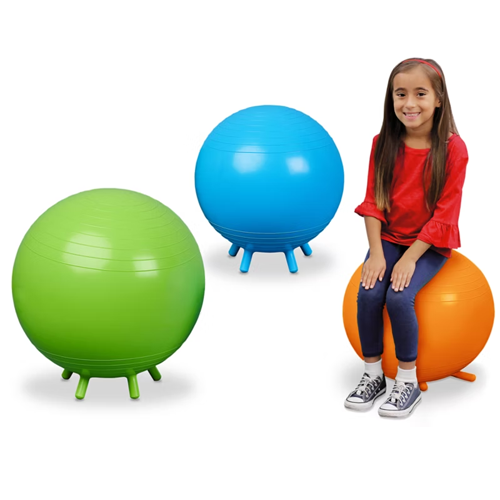
4. Stool Seats
Simple, portable, and stackable, classroom stools for students are one of the most adaptable forms of flexible furniture. Whether grouped around tables or placed individually, they make transitions easy and quick. Metal or plastic stools with backless designs encourage better posture and are great for classrooms with limited space.
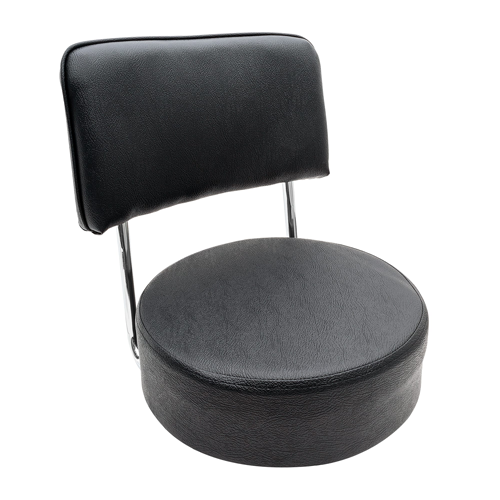
5. Stand-Up Desks
Great for active learners, stand-up desks help students alternate between sitting and standing. Many come with height-adjustable features and even wheels for mobility. Pair them with a high stool or allow students to stand freely. This is one of the more advanced flexible seating options, often seen in upper elementary or middle school classrooms.
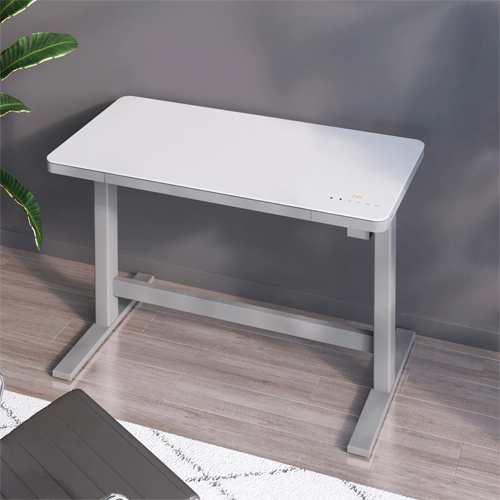
6. Recliners
Believe it or not, small-scale recliners are becoming a favorite in homey classroom designs. Found easily at garage sales or second-hand, they offer maximum comfort during story time or brain breaks. If you’re building a calm-down corner or sensory-friendly zone, these are a winner. Durable vinyl covers make cleanup easy.
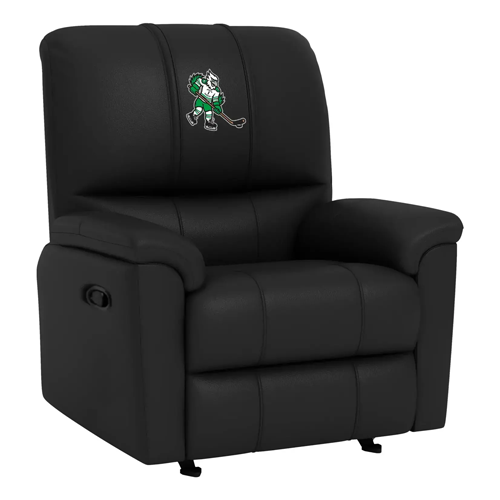
7. Rocking Chairs
A timeless alternative seating choice for any classroom, rocking chairs bring movement and calm at the same time. Perfect for read-alouds or independent work, they create a cozy, familiar feel. Children can gently rock back and forth while reading, listening, or thinking, which helps them stay engaged and comfortable during learning activities.
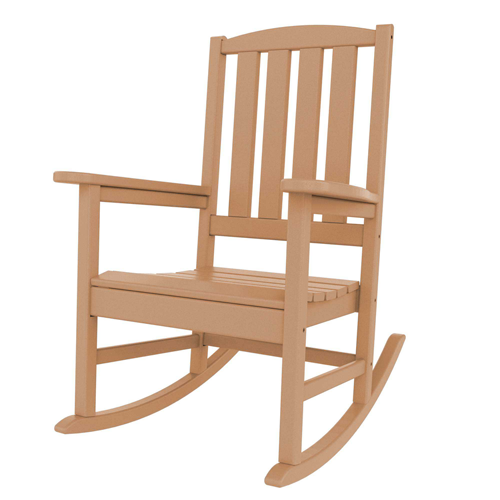
8. Folding Chairs
Folding chairs offer the ultimate flexibility. These chairs for classrooms are lightweight, easy to store, and ideal for multipurpose rooms. Great for small group activities or parent-teacher events, they can be moved and rearranged in seconds. As a type of movable classroom furniture, kid-sized folding chairs in bright colors appeal to early learners while keeping the classroom versatile and functional.
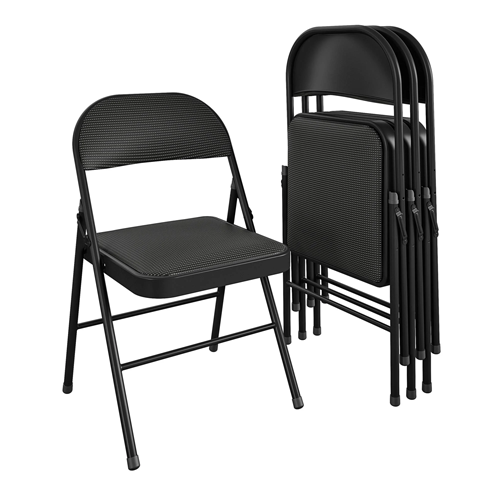
9. Bouncy Bands
Bouncy bands are an amazing add-on to traditional classroom seating. These stretchy bands attach to chair legs, letting students bounce their feet quietly under the desk. They support movement and focus, especially for students with ADHD or sensory needs. An affordable way to bring adaptive seating for classrooms to standard setups.
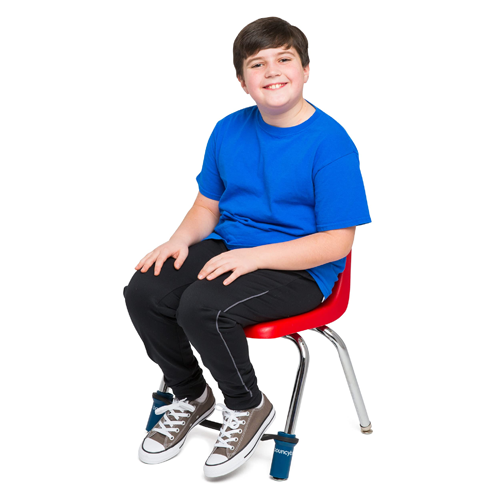
10. Hammock Chairs
Looking for something truly unique? Hammock chairs offer a floating, relaxing spot that feels more like a lounge than a seat. Hung from the ceiling or a sturdy indoor stand, they create a calm, quiet reading nook. This is one of the most creative, flexible seating ideas that classroom teachers love for quiet zones.
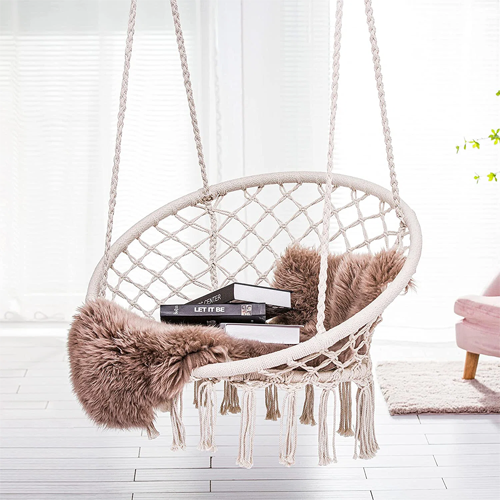
11. Outdoor Lawn Chairs
Lightweight and foldable, outdoor lawn chairs make excellent additions to a flexible seating classroom, especially if you occasionally move lessons outside. These chairs are durable, easy to clean, and incredibly versatile. They’re great for reading groups, centers, or even as a relaxed alternative to traditional chairs for classroom use.
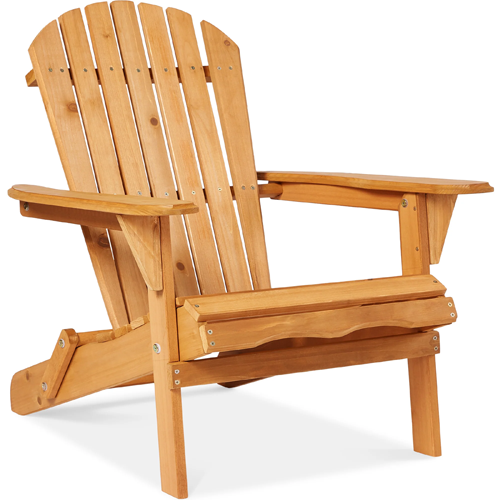
12. Starfish Ball Chairs
A fun and unique twist on student seating, starfish-style balance ball chairs encourage active sitting while supporting posture. The rounded seat allows for gentle bouncing, making it an ideal solution for fidgety students. These are great examples of flexible seating options that combine movement, fun, and comfort.
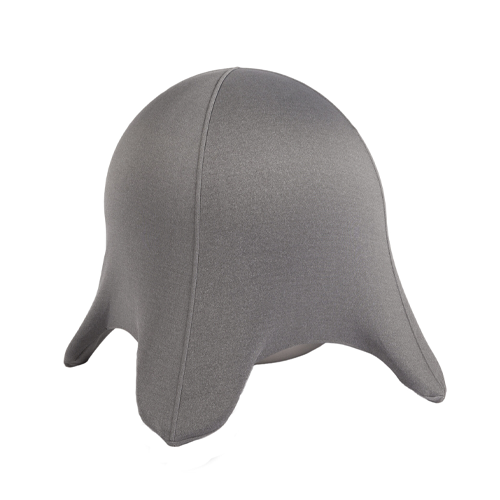
13. Yoga Mats
Yoga mats are a low-cost, portable option for floor seating in the classroom. Students can roll them out anywhere to create a soft, defined work zone. They’re especially helpful for stretching, mindfulness breaks, or quiet reading time. Yoga mats are also easy to clean and store, making them a practical solution for alternative seating setups and flexible seating options that encourage movement and calm.
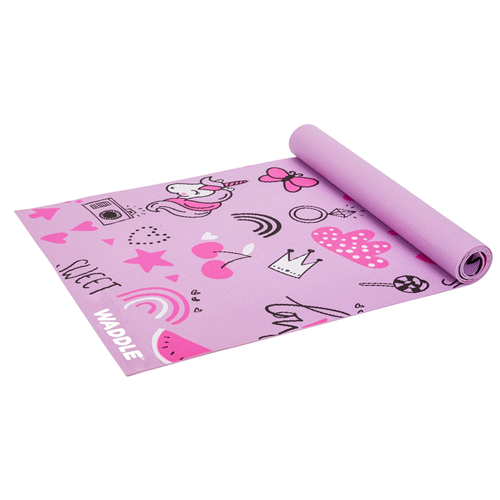
14. Camping Chairs
Camping chairs offer the perfect blend of support and portability. These classroom seats are especially popular during classroom camp-themed days or outdoor learning. They fold neatly and can be stored away when not in use. The built-in cup holders? A bonus that kids love.
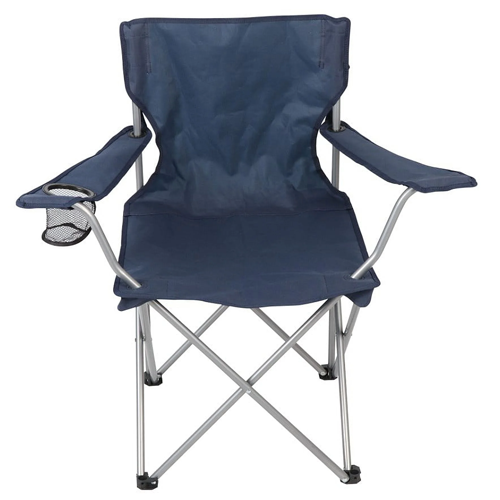
15. Milk Crate Seats
Milk crates are one of the most affordable DIY solutions for cheap, flexible seating for classrooms. Simply flip them over and add a padded top or seat cushion. You can even store books or supplies inside, combining storage and student seating in one. This form of cheap, flexible seating is ideal for centers, group zones, or reading corners.
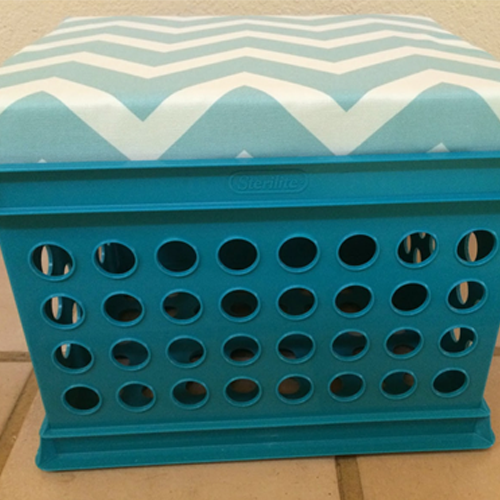
16. Cardboard Box Hideouts
It may sound strange, but kids love sitting inside big cardboard boxes. Turn appliance boxes on their sides and throw in a pillow, and you have an instant reading nook or quiet zone. This type of DIY flexible seating gives children a cozy, enclosed space to relax or work independently, while also showing how simple, low-cost materials can transform into creative classroom seating solutions.
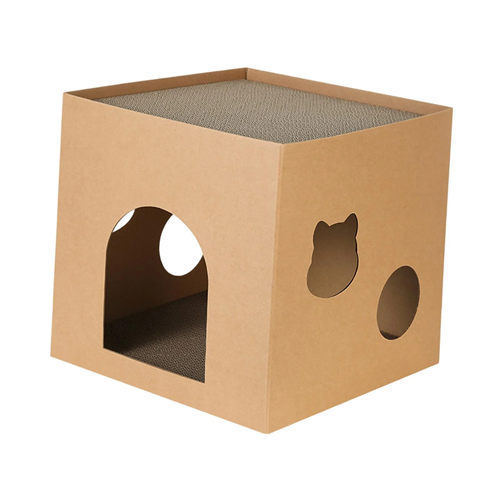
17. Stadium Seats
Stadium seats provide low-profile, padded support for classroom floor seating. They are portable, easy to stack, and great for circle time or whole-group discussions. Many versions include backrests, offering added comfort for young learners. For classrooms needing budget-friendly, flexible seating options, stadium chairs are a smart choice.
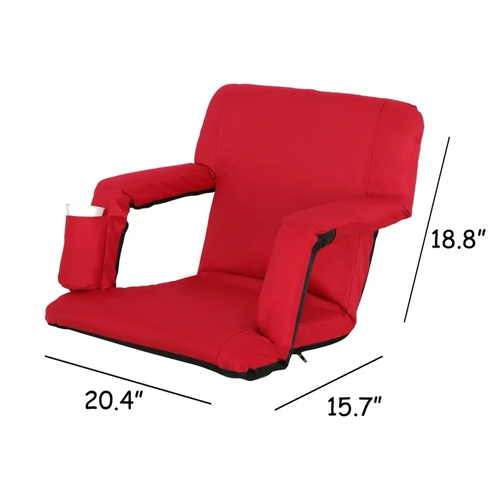
18. Bucket Stools
Made from 5-gallon plastic buckets with secure lids, these make surprisingly sturdy and budget-friendly student seating options. Add a cushion or foam top, and you’ve got seating that doubles as storage. Great for classrooms that need to save space while offering flexible layouts.
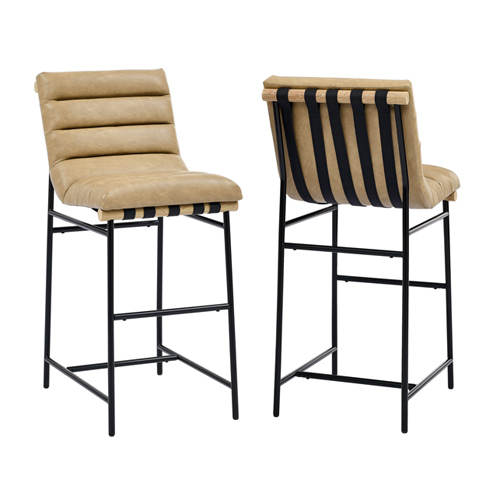
19. Lap Desks
Lap desks give students the freedom to work anywhere in the classroom. Whether sitting on a bean bag, carpet square, or cushion, lap desks provide a stable surface for writing or drawing. They’re a must-have in any flexible seating classroom, especially where floor seating is used often.
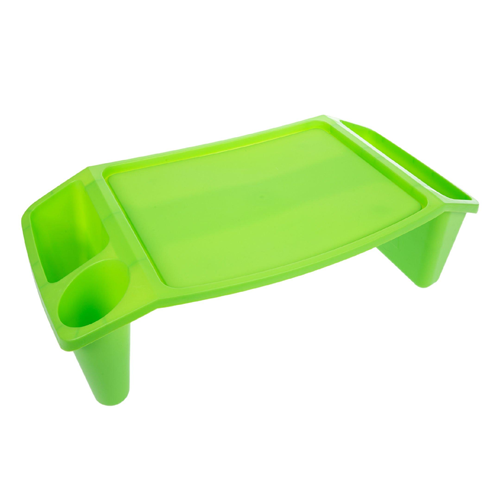
20. Puzzle Foam Floor Tiles
Create custom learning zones with interlocking foam tiles. These soft, durable squares can be laid out for sensory seating, group time, or quiet play areas, and they provide a cleanable surface that’s perfect for classroom floor seating. As an option for affordable classroom furniture, puzzle tiles are practical, safe, and inexpensive, making them a smart choice for schools on a budget.
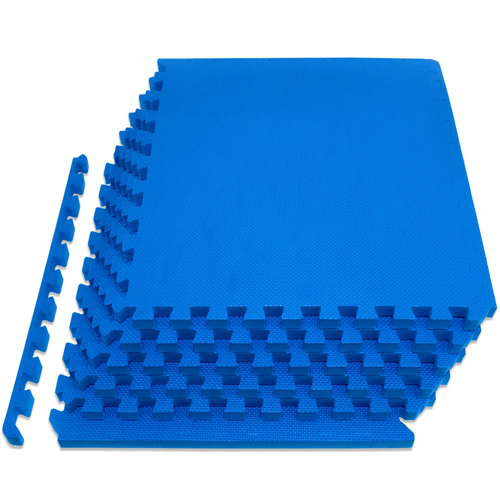
21. Reading Pods
Soft-sided mini pods or dome chairs are fantastic for children who need a calm, enclosed space. These are ideal for students who feel overstimulated and need a quiet spot to refocus, making them perfect for flexible seating in classrooms with sensory support.
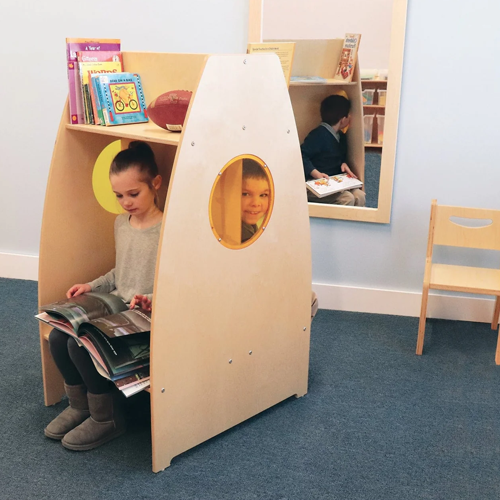
22. Chair Cushions
Simple yet effective, padded chair cushions can turn any hard surface into a comfortable student seating solution. Use them on standard chairs, benches, or even crates. Many are designed to stack or tie to existing chairs for classrooms, making them practical for rotating seating arrangements.
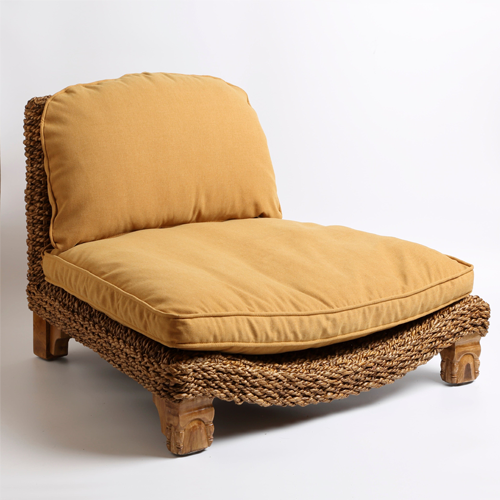
23. Wobble Stools
A staple in any flexible classroom, wobble stools promote balance, focus, and engagement. Their rounded base allows students to rock gently in place, providing subtle movement that helps improve concentration. Whether for group work or solo learning, these are one of the most effective flexible seating options available today.
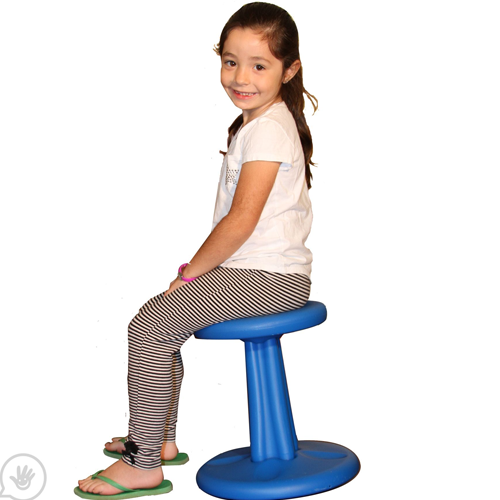
24. Futons or Small Sofa
Adding a futon or child-sized sofa to your classroom creates a home-like atmosphere and encourages collaborative or quiet reading time. These soft, shared seating options work well in literacy corners or calm-down areas. Look for durable covers and easy-to-clean materials when selecting this type of flexible classroom seating.
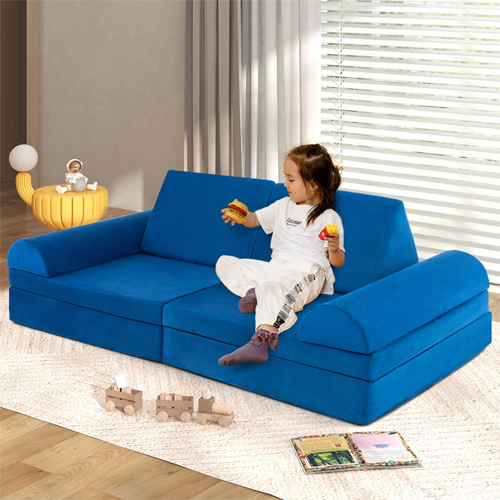
25. Calming Cube Chairs
Calming cube chairs offer structure, support, and comfort all in one. Their minimalist boxy design makes them stable for younger learners, while the enclosed sides provide a calming sense of personal space. Ideal for reading corners or independent work zones, these cube-shaped seats are a fantastic example of flexible seating options that promote focus in early childhood classrooms.
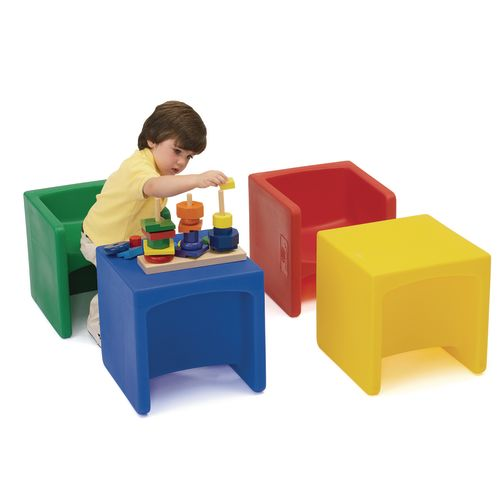
26. Story Time Cushions
Perfect for circle time or shared reading sessions, story time cushions create an inviting space on the classroom floor. Lightweight and stackable, they’re easy to move and clean, making them one of the most practical student seating options for group learning. Bright colors and soft padding add comfort while subtly defining each child’s personal space.
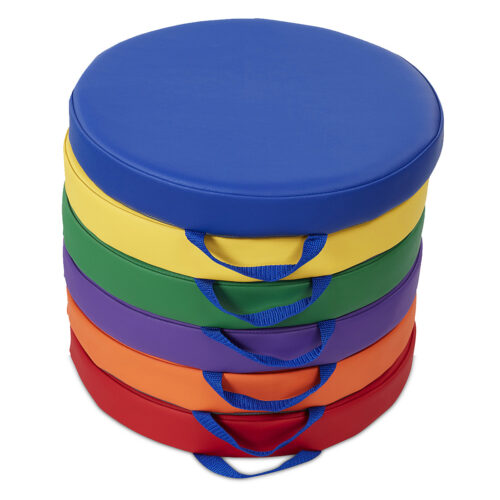
27. Stackable Stools
Stackable stools are a flexible favorite because they’re compact, durable, and easy to store. Whether you’re working in small groups or need extra classroom seating in a pinch, these stools are always ready. They’re available in various heights, which makes them suitable for different table setups and learning areas, true all-stars in any flexible classroom furniture lineup.
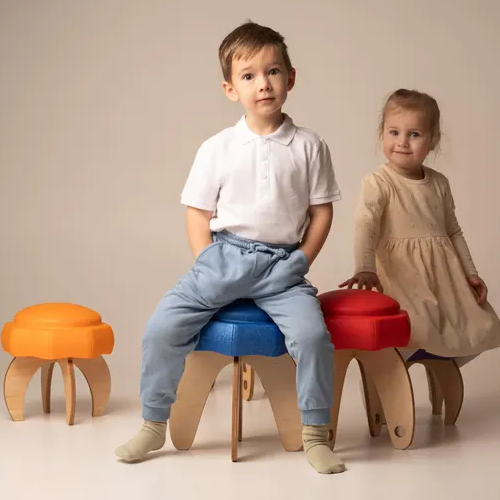
28. Short Stools
Short stools are especially well-suited for early childhood learners. They allow children to sit at low activity tables or group zones without being too far from the ground, which supports safe, confident movement. Add them to your reading center, sensory space, or maker zone to introduce flexible seating for the classroom that encourages mobility and independence.
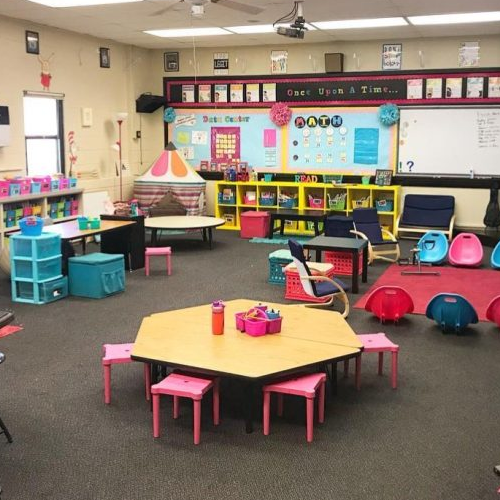
29. Storage Ottomans
Storage ottomans do double duty, offering comfy, padded classroom seats on top and clever storage solutions inside. Use them to stash extra supplies, books, or manipulatives. Their dual-purpose design makes them a smart, space-saving addition to any classroom flexible seating setup. Kids love choosing these as their go-to workstations.
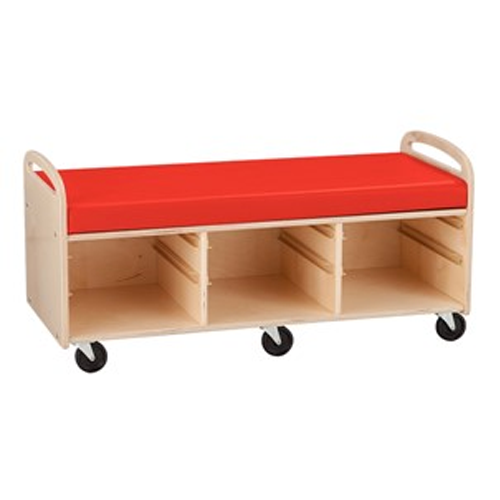
30. Reading Pillows
Large, soft reading pillows give students a cozy, relaxing space to curl up with a book or work independently. They’re perfect for quiet zones or calming corners and offer the comfort many students crave during downtime. Reading pillows are among the most beloved alternative seating options for classrooms, especially in literacy-rich environments.
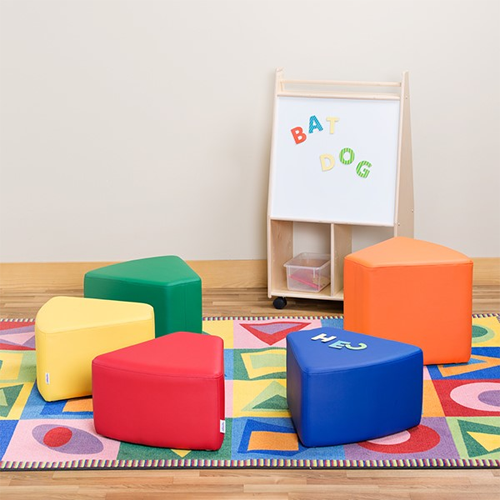
31. Inflatable Ball Chairs
Inflatable ball chairs are a modern take on student seating that supports core strength, balance, and posture. These soft, flexible seats encourage kids to move slightly as they work, helping release excess energy. Many versions include legs or stabilizing rings, making them perfect for flexible seating in the classroom where structure and safety are both priorities.
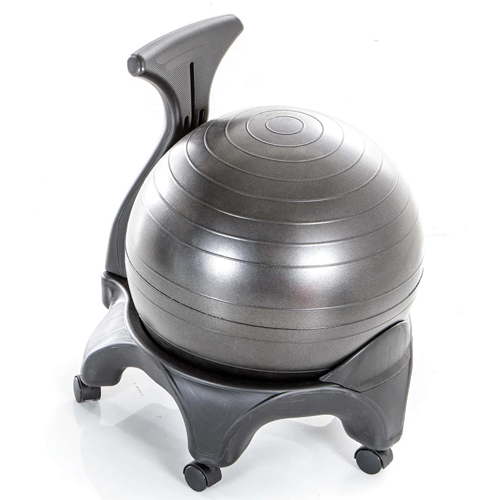
32. Tilted Active Seats
Tilted stools, often referred to as “active seats,” are a popular choice in flexible seating classrooms. These stools tilt gently forward, back, and side-to-side, allowing kids to move while staying seated. Ideal for students who struggle with stillness, this alternative seating option helps them stay focused without being disruptive.
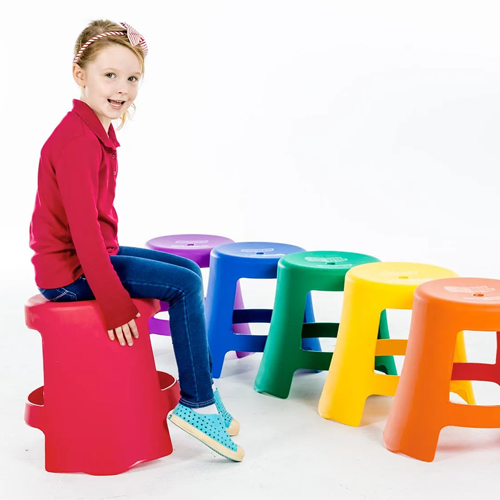
33. Wave Seats
Wave-shaped seats are lightweight, ergonomic, and playful, great for young learners. They can be flipped, stacked, or used as small benches, offering variety in one design. These are excellent flexible seating options for kindergartens or primary grades and can easily complement your reading or creativity corner.
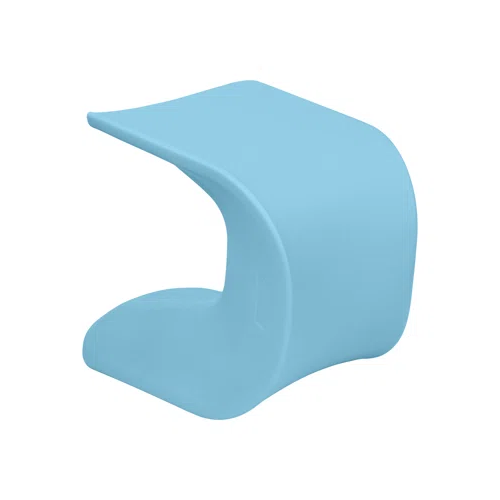
34. Picnic Table
A small picnic table offers communal seating that feels more casual and collaborative than traditional desks. These setups are perfect for snack time, collaborative group work, or outdoor learning days. As part of your flexible seating options, they promote shared responsibility and positive social interaction in a child-sized, approachable format.
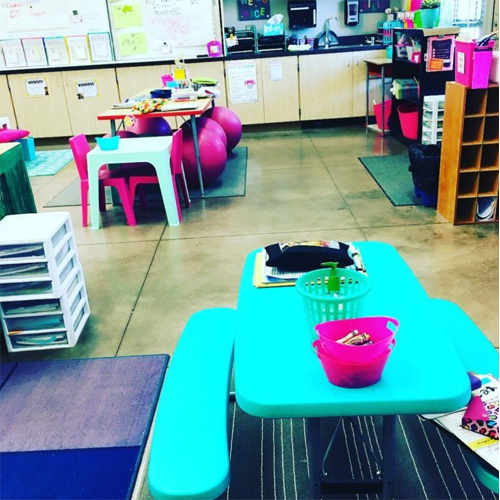
35. Lap Tray
Lap trays are a fantastic tool for classrooms that incorporate floor seating for students. Lightweight and portable, they give children a stable surface for writing, drawing, or using tablets wherever they choose to sit. Whether paired with a bean bag, cushion, or carpet square, lap trays support personalized learning in any flexible seating classroom.
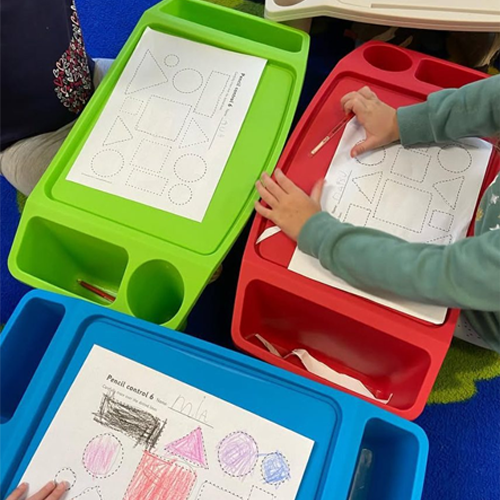
36. Crescent Lounge Seats
These curved, upholstered floor seats support collaborative learning and semi-circle teaching zones. Use them with a central table or rug for guided reading or discussions. Easy to reconfigure for flexible seating classroom layouts.
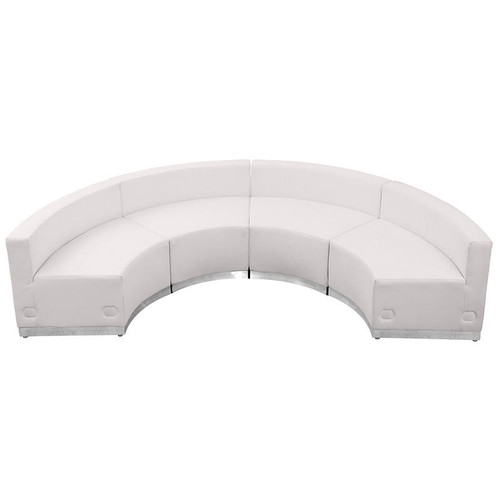
37. Wiggle Stools
Wiggle stools allow safe movement while seated, helping kids channel excess energy and improve focus. With slightly curved or rounded bases, they rock and sway gently, making them especially popular among students who need extra sensory input. If you’re seeking flexible seating options that blend function with fidget-friendly design, wiggle stools are a must-have.
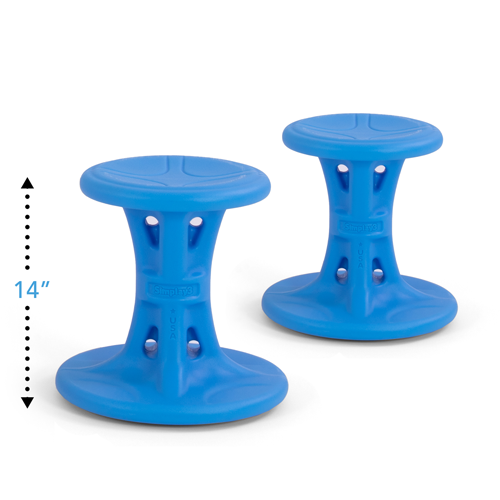
38. Foam Library Trios
Foam cushion sets designed for reading nooks offer both comfort and structure. These modular seats work well in library seating for schools or quiet time areas. They’re perfect for pairing with bookshelves or window corners and are especially popular in early childhood flexible seating setups.
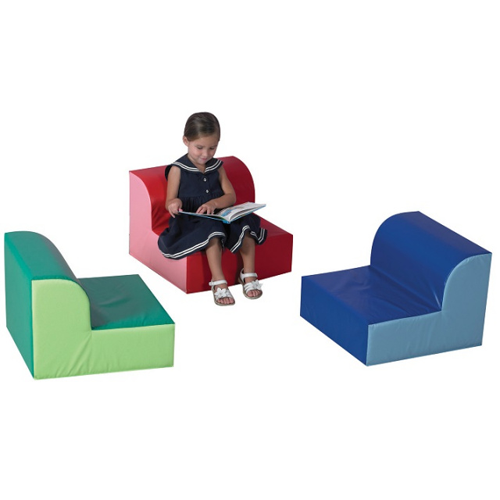
39. Adapta-Benches
Versatile and durable, Adapta-benches can be used as a bench, flipped as a table, or turned into a larger seat. They’re fantastic for younger students who need multi-functional furniture that’s easy to handle. This kind of adaptive seating for classroom design supports active learning and hands-on exploration.
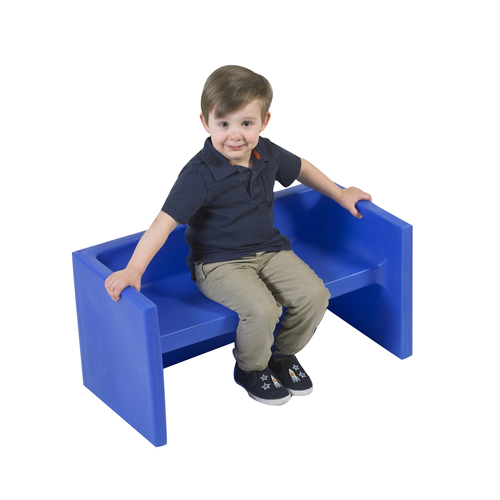
40. Zenergy Ball Chairs
These round, inflatable seats are fitted with fixed legs to prevent rolling and tipping. They offer bounce and balance without compromising classroom safety. Many teachers use these flexible seating options for kids who fidget or have trouble staying seated in traditional chairs.
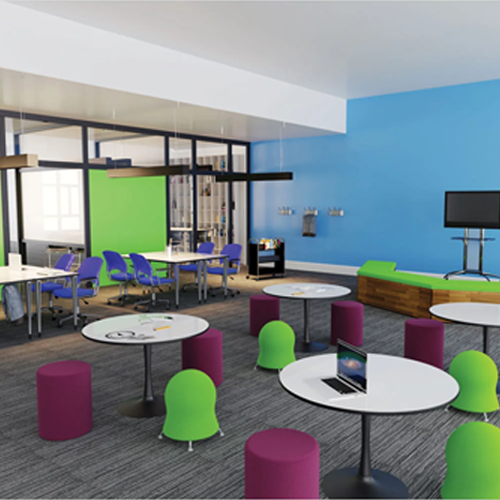
41. Low-Profile Flip Chairs
These foldable lounge chairs go from flat mats to upright seats in seconds. Padded and perfect for classrooms with limited space, they’re a favorite among students who like to stretch out but still want back support. A solid option for classroom flexible seating ideas.
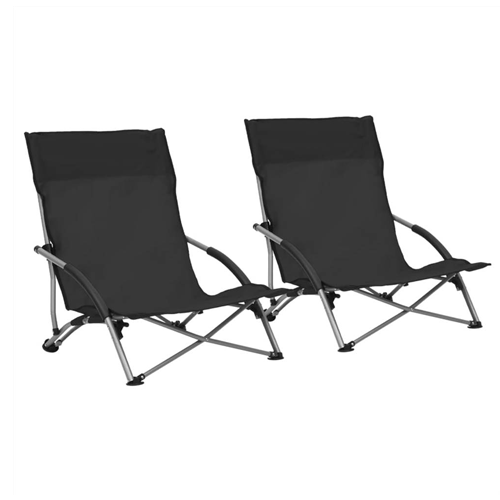
42. Adjustable-Floor Rocker Chairs
These floor-level rocker chairs sit directly on the carpet and allow a gentle back-and-forth motion while offering upright support. Popular in early childhood education spaces, they are easy to clean, stackable, and ideal for use during circle time, reading sessions, or independent play. A practical choice for classrooms incorporating both movement-friendly and structured seating options.
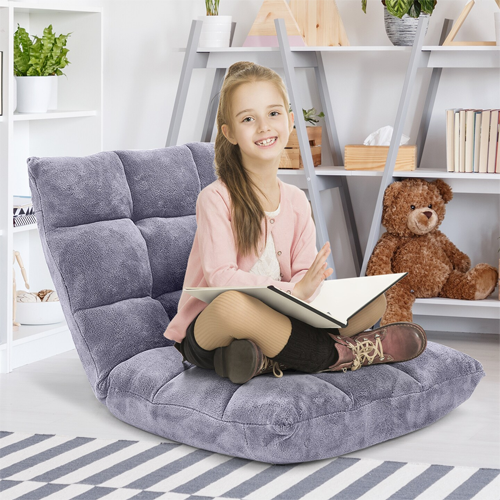
43. Net Chair
Net chairs are a lightweight, breathable, flexible seating option that provides just enough bounce and support for active students. The hammock-style design cradles the body while allowing airflow, perfect for warm environments or reading corners. Kids love the cozy, nest-like feel, and the flexible frame encourages gentle movement without distraction.
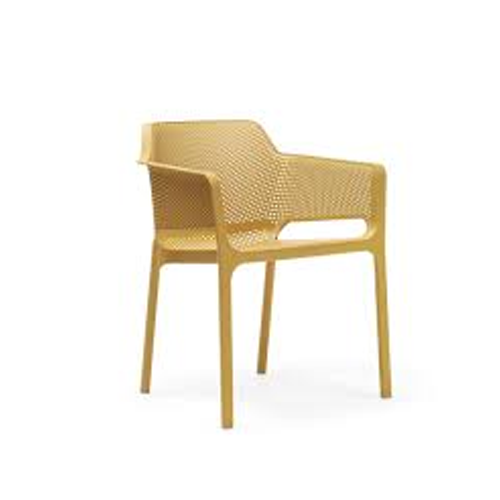
44. Twixt Active Stools
Sleek and ergonomic, these active stools are height-adjustable and allow for movement in all directions. They’re particularly useful in flexible seating middle school setups, where older students need seating that supports longer focus times while still accommodating movement.
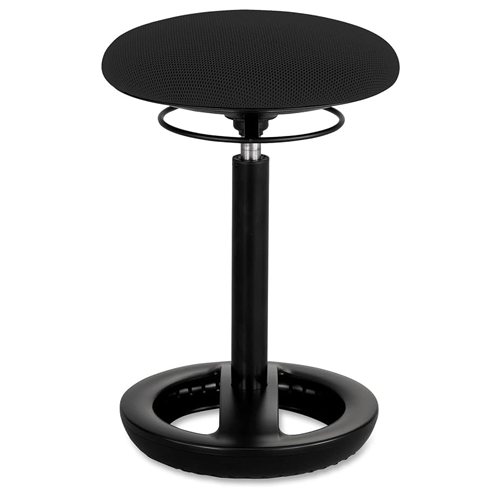
45. Rolling Chairs
Rolling chairs give students mobility and flexibility to move between learning zones effortlessly. Whether used at tech stations, group work areas, or art corners, these classroom seating options promote autonomy and movement. Look for child-sized models with locking wheels to maintain safety without sacrificing independence.
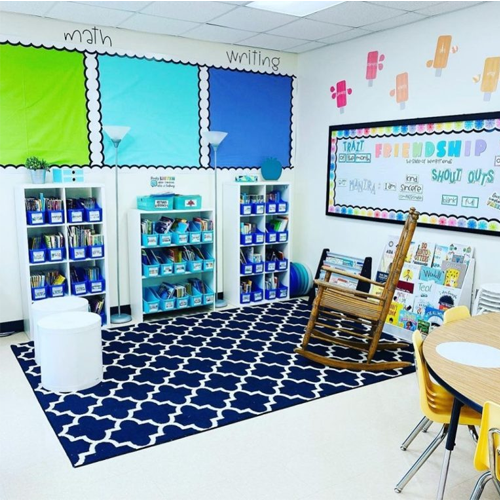
46. Curved Modular Bench
Curved seating encourages collaboration. These flexible seating furniture pieces can be grouped to form circles, waves, or reading pods. Great for group discussions or project-based learning, they help create inviting, student-led learning environments.
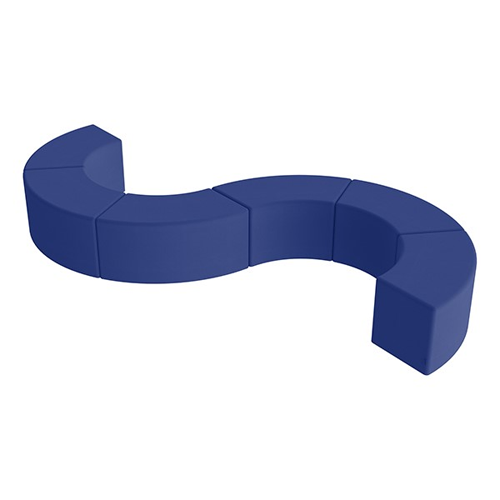
47. Couch and Coffee Table
Want to create a home-like atmosphere in your classroom? A child-sized couch paired with a sturdy coffee table offers a cozy, inviting area perfect for group reading or quiet collaboration. This combination is a strong example of how flexible classroom furniture can enhance emotional comfort while supporting varied learning styles.
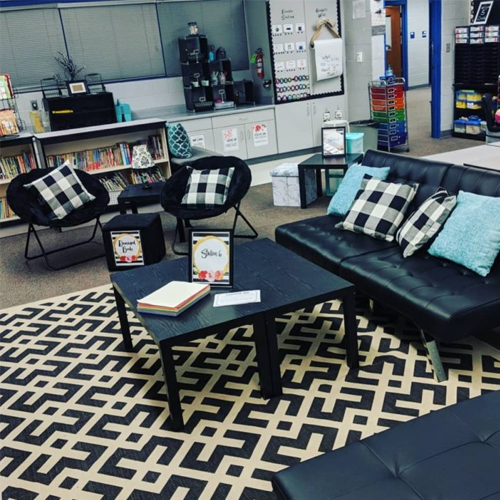
48. Mobile Desk Chairs with Storage
These combination chairs include a built-in desk arm and under-seat storage. Designed for mobility, they roll smoothly and support flexible seating in high school or upper elementary settings. Students can move from group to solo work without disrupting the class flow.
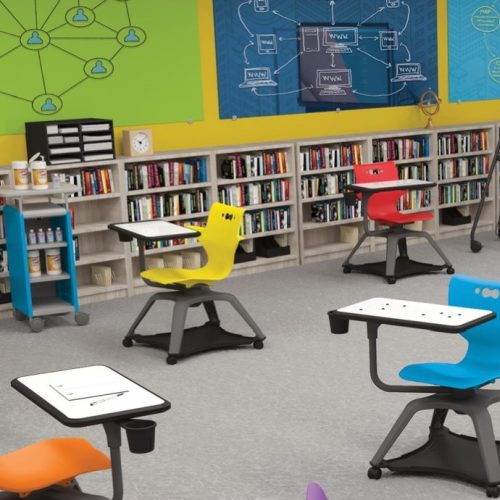
49. Patio Furniture
Repurposed patio furniture, like plastic Adirondack chairs or resin loveseats, offers a creative and weather-resistant approach to alternative seating for the classroom. These pieces are especially great for outdoor learning environments, library corners, or themed spaces. Add cushions or throw blankets for extra comfort and style.
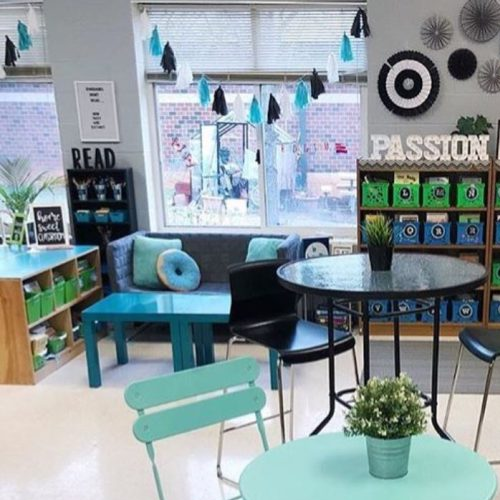
50. Inflatable Chairs
Inflatable chairs are fun, affordable, and surprisingly durable student seating options. These colorful, bouncy seats offer sensory feedback and work well in calm-down corners or independent reading zones. Plus, they deflate easily for storage, making them ideal flexible seating options for classrooms that require frequent layout changes.
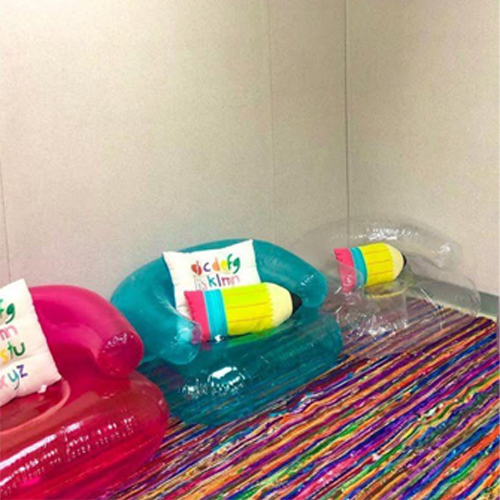
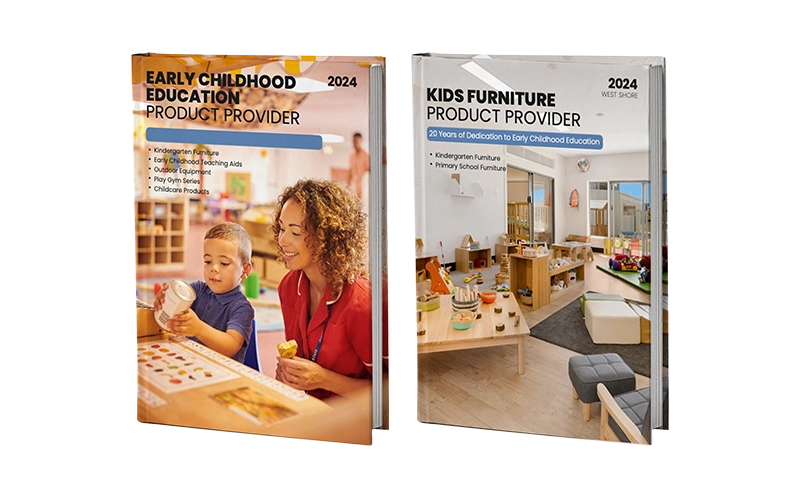
What Should You Consider When Choosing Flexible Seating Options for Your Classroom?
When it comes to selecting the right flexible seating options for your early childhood classroom, it’s not just about variety; it’s about purpose, practicality, and safety. Every seating choice should support learning, development, and the daily flow of your classroom. Here are the key factors I always recommend considering before you buy or arrange your flexible classroom furniture:
Age and Developmental Needs
The ideal flexible seating for kindergarten will differ from what works in a grade 3 or middle school setting. Younger students often need softer, low-to-the-ground seating like bean bag chairs, scoop rockers, or floor cushions, while older children may prefer adjustable stools or active seating that supports longer periods of focus.
Classroom Size and Layout
Before adding any alternative classroom seating, take stock of how much space you actually have. Can students move around freely? Can groups form naturally? Avoid overcrowding the room with too many large items. Use stackable seating, rolling chairs, and modular pieces to keep pathways open and transitions smooth.
Safety and Durability
Especially in early childhood education, safety is non negotiable. Choose flexible seating furniture for classrooms that’s stable, tip-resistant, and made from materials that are easy to clean. Look for products with non slip bottoms, washable covers, or rounded edges, especially for classroom floor seating or DIY flexible seating options.
Student Choice and Independence
The goal of flexible seating in classrooms is to give students more ownership of their environment. But that doesn’t mean unlimited freedom. Provide a curated set of student seating choices that match your learning activities and then model how to use each one. Let students experiment, but within structure.
Cleaning and Maintenance
Let’s be real, kids are messy. Your classroom seating options need to hold up to daily spills, scuffs, and everything in between. Look for soft seating for classrooms with machine-washable covers or plastic chairs that can be wiped down quickly. The easier your seats are to clean, the more sustainable your setup will be.
Budget and Long-Term Use
You don’t have to invest in expensive furniture to create an engaging, dynamic learning space. Many of the best flexible seating classroom ideas come from repurposed materials, DIY projects, or affordable tools like lap desks or wobble cushions. Focus on durability and versatility; you want options that will last across multiple school years.
Learning Objectives and Activity Types
Flexible seating isn’t just about where kids sit; it’s about how they learn. Different types of tasks require different kinds of seating. For example:
- Reading → Cozy bean bags or lounge chairs
- Writing → Clipboards with cushions or lap desks
- Group work → Modular benches or curved tables
- Sensory needs → Wiggle stools or balance ball chairs
When selecting flexible seating classroom furniture, always match it to the goal of the learning activity.
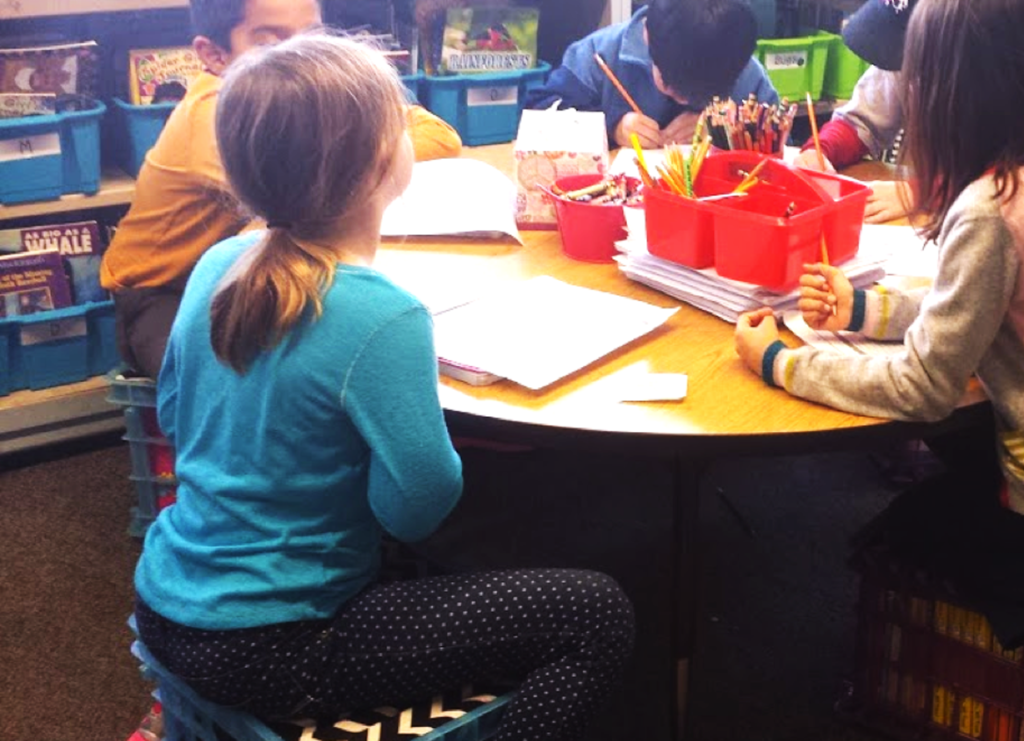
How Can You Implement Flexible Seating in Your Early Childhood Classroom?
Switching to a flexible seating classroom isn’t just about buying new chairs, it’s about designing an environment where students thrive through movement, independence, and choice. A successful transition requires thoughtful planning, clear expectations, and the right mix of student seating that suits your learning goals and classroom layout.
Here’s how to implement flexible seating options step-by-step in your early childhood classroom:
Step 1: Start Small and Observe
You don’t have to replace everything overnight. Begin with a few alternative seating classroom options like wobble stools, floor cushions, or bean bags. Observe how your students respond to each type of seat. Take note of who focuses better with movement, who prefers a quiet corner, and who needs more structure.
Step 2: Set Clear Rules and Expectations
Flexible doesn’t mean chaotic. Teach your students how to use each seating type appropriately. For example:
- Wobble stools are for work, not spinning
- Bean bags are for reading time
- Floor seats should stay in designated zones
Post visual charts or labels to help students remember the rules. Clear boundaries help kids build responsibility and reduce disruptions in the classroom.
Step 3: Create Zones for Different Activities
Divide your classroom into purposeful areas: a reading nook with comfy floor seats, a group zone with modular benches, an art area with stackable stools, etc. This helps children associate certain classroom seating options with specific tasks and transitions.
Step 4: Involve Students in the Process
Let students participate in choosing their seat for the day or activity. Use a chart, name tags, or a sign-in system. This builds decision-making skills and reinforces the core idea of flexible seating in classrooms: student choice with structure.
Step 5: Rotate Seating and Refresh Often
Over time, rotate which flexible seating furniture is available. This keeps things fresh and gives all students a chance to try each option. If something isn’t working, whether it is too distracting, uncomfortable, or misused, replace or adjust as needed.
Step 6: Monitor, Reflect, and Adjust
Observe how each student seating option is used during the day. Do some students always gravitate toward the same seats? Are others avoiding certain areas? Use this insight to balance comfort, accessibility, and learning outcomes. Be ready to tweak your setup each term or season.
Step 7: Communicate with Parents and Staff
Let parents know why you’re introducing flexible classroom seating and how it supports focus, independence, and active learning. When families understand the purpose behind these changes, they’re more likely to support your classroom goals. You can share photos, classroom updates, or student feedback to show how children are thriving with the new flexible seating options.
It’s also important to align with teaching assistants or support staff so that routines are consistent across the day. Clear communication ensures that everyone, from parents to colleagues, understands the value of flexible seating and plays a role in helping students succeed in a dynamic, student-centered classroom.
Flexible Seating Options That Work for Every Classroom—From Budget to Custom Design
En Muebles West Shore, we know that every kindergarten, preschool, and early learning center operates under different constraints. Some are working with tight budgets, others are building showcase classrooms in international schools. But the goal is always the same: to create a child-centered environment that encourages movement, independence, and focused learning. That’s why we offer flexible seating options for every type of classroom, designed to support a range of educational philosophies, including Montessori, Reggio Emilia, and inquiry-based learning.
For cost-conscious schools or multi-campus operators, affordable, flexible seating is a must. That’s where our factory-direct model shines. We manufacture a wide range of classroom seating that’s low in cost but high in durability, like stackable stools, scoop rockers, foam floor cushions, and lightweight bean bag chairs. These alternative seating options are easy to clean, easy to move, and perfect for classrooms that need daily flexibility. Many of our lower-cost designs also include clever features like built-in storage or reversible use, helping schools get more value from every purchase. They’re ideal for kindergarten classrooms that need simple, practical, and scalable flexible classroom seating without compromising safety or child-friendliness.
At the same time, we also serve high-end kindergartens, international schools, and education brands that need customized, flexible furniture to match their brand vision. For these clients, we design premium student seating like modular lounge benches, custom-colored wobble stools, Montessori-style low seating with natural wood finishes, and circle-time sofas with hidden storage. Every piece is made-to-order based on specific dimensions, upholstery choices, and layout plans. That’s why we also offer layout consulting, batch recommendations based on classroom size, and freight coordination to ensure your flexible seating classroom furniture arrives safely and on time, no matter where in the world you are.




